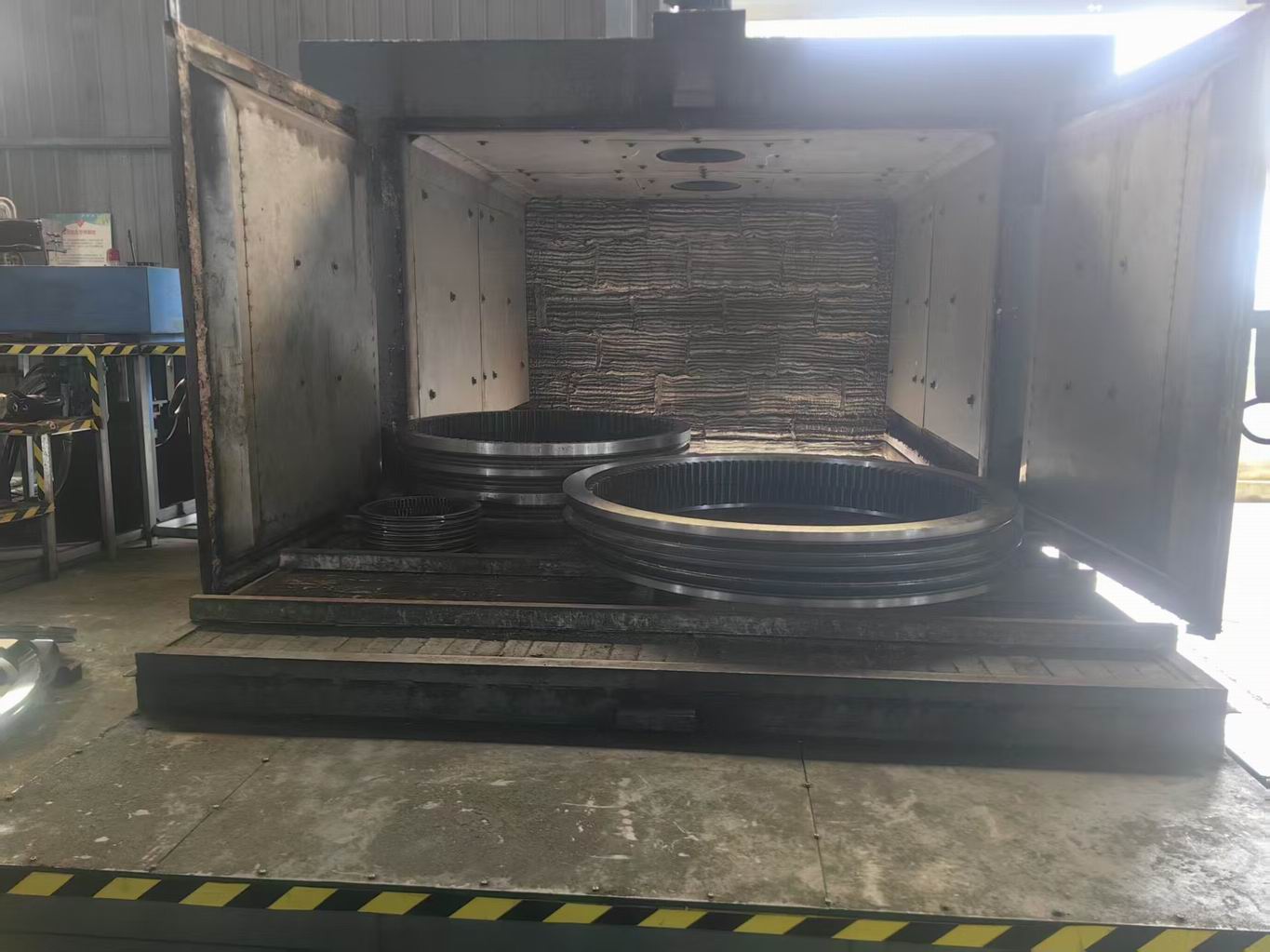Why Tempering is Essential After Quenching for Quenched and Tempered Steel: A Critical Step for Stabilizing Slewing Bearing Raceways and Teeth
For slewing bearings manufactured from high-quality quenched and tempered steels like 50Mn and 42CrMo, the base material already possesses outstanding comprehensive mechanical properties. However, after surface hardening of the raceways and teeth, a core question arises: Is tempering still necessary?
Our stance is unequivocal: it is absolutely essential. This process is the critical step to unlocking the material's full potential and ensuring long-term product reliability.
Tempering: The “Calm-the-Storm Pill” for Stability
The martensitic structure formed during quenching is hard yet brittle, accompanied by immense internal stresses. For quenched and tempered 50Mn and 42CrMo, skipping tempering creates a significant stress differential between the newly hardened layer and the tough core, sowing hidden dangers. Through precise low-temperature heating, tempering effectively:
Eliminate internal stresses: Prevent subsequent deformation and cracking.
Stabilize microstructure and dimensions: Ensure long-term dimensional accuracy.
Balance toughness and hardness: Enhance impact resistance while maintaining wear resistance.
Core Parameters Determine Tempering Quality
Our tempering process strictly controls two core parameters:
Temperature: Maintained within the low-temperature range of 180°C - 250°C to eliminate stresses while maximally preserving quenched hardness.
Time: Ensures adequate holding duration based on workpiece wall thickness for uniform and thorough stress relief.
Consequences of Omitting Tempering and Industry Discussion
Omitting tempering permanently “locks” the immense internal stresses generated by quenching within the workpiece. This leads to:
Unpredictable deformation: Affects raceway roundness and gear meshing accuracy, causing abnormal noise and binding.
Risk of micro-cracks: Under impact loads, stress concentrations may initiate cracks, resulting in premature failure.
Dimensional instability: During prolonged use or storage, stress gradually releases, causing dimensional loss and precision degradation.
We understand that some competitors omit this step to reduce costs. They may not even possess the necessary tempering furnaces. However, for those pursuing exceptional quality—especially in slewing bearings used in demanding applications like heavy machinery—tempering is not a redundant process. It is the ultimate safeguard for the quenched and tempered base material and the hardening process itself. It represents our commitment to standing behind our products for their entire lifecycle.


